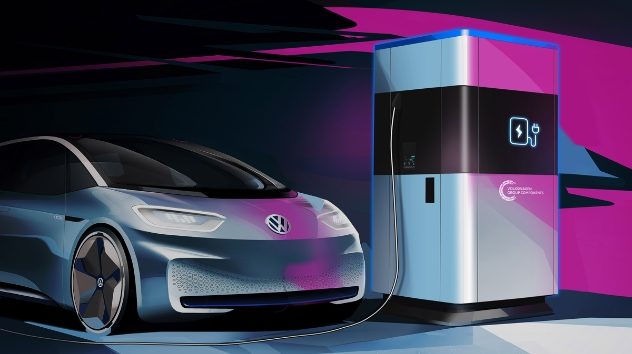Read The Full Article On: Marketwatch
Barriers to growth could slow the adoption rate of EVs
It’s meaningless to have the right investment thesis if your timing is bad. No one learned this lesson more in 2020 than all the sad sacks who shorted Tesla TSLA, +2.84%.
Given such metrics as the current price-to-earnings ratio of 1,400, to name but one, the thesis that the electric vehicle maker is wildly overvalued is even more valid today than a year ago. But the timing of betting against it? Who knows. You know what Mr. Market says: The market can stay irrational longer than most investors can stay solvent. Mr. Market, if you haven’t been introduced, was the character created by Warren Buffett’s mentor—Benjamin Graham—in his 1949 classic “The Intelligent Investor.” In it, he warned of the dangers of market irrationality and group think.
Group think
Tesla’s rise is fueling the group think that electric vehicles are disrupting the U.S. and global auto markets in a major way.
This depends on how you define “major,” and what parts of the global market you’re talking about.
For example, InsideEVs reports, “November 2020 was an amazing month for passenger plug-in electric cars with a new all-time monthly record of over 414,300 units!” But, it goes on to say, 364,000 of these units—88%—are attributable to China (over 198,000) and Europe (over 166,000). This implies about 50,000 units over the rest of the world, including the world’s number two market, the United States.
Let’s be charitable for a moment and say that all 50,000 of those other November units were sold in the United States. They weren’t, but let’s just say they were. Some 17 million vehicles are typically sold in the U.S. each year, according to automotive research and forecast firm Edmunds. That’s about 1.41 million per month. Fifty-thousand would be about 3.5% of the market. But again, the true figure is less than that.
So it’s fair to say that despite all the hoopla, and countless media mentions of Tesla’s charismatic CEO Elon Musk, the EV share of the U.S. market remains modest.
All told, with China and Europe driving the EV market, BEVs (battery electric vehicles) and PHEV (plug-in hybrid electric vehicles) comprised 3.8% of the global market through the end of November, Inside EVs says. This represents a market share gain of 1 percentage point, given a McKinsey studywhich said EVs were 2.8% of the global market at the end of March 2020. While still quite small, it’s worth noting that the global share was just 0.6% as recently as 2015.
Why does the U.S. lag China and Europe? The gradual phasing out of generous federal tax credits—up to $7,500 in some cases—hasn’t helped. Another has been cheap gasoline prices. The nationwideaverage price of a gallon of regular was $2.25 on New Year’s Day, says AAA, meaning that driving a gas-powered car is quite affordable—not that people are driving to work.
While some people may buy an EV for altruistic reasons—the sense that they are striking a blow for the environment—I suspect that good old-fashioned financial incentives are equally attractive—not to mention more tangible—to others.
Europe more generous
This helps explain why electric vehicles, for all their hype, only account for about 2% of new car sales here in the United States. In Europe, tax breaks tend to be more generous, and the EV share of the market is about 5%. Depending on the car and the country, tax breaks on an electric car can be as much as $10,000—more than enough to sway buyer decisions, all else being equal.
In Norway, for example, EVs now have a stunning 54% of the market. Why 54%? Because just as cheap gas crimps EV sales in America, they spur EV sales in Norway, where gasoline costs the equivalent of about $7.30 a gallon.
Tax breaks are market distortions, meant to support a promising industry in its early stages. Until the principal component of an electric car—its battery—can be made more efficient, they’ll probably be needed for a few more years.
“There are two bottlenecks that limit their practicality,” says Venkat Viswanathan, a professor at Carnegie Mellon University in Pittsburgh, who is leading a team of battery researchers. “We cannot recharge them well enough today, and the other one is that we cannot get all of the capacity, we cannot get a large amount of the energy out.”
Sadly, there’s no battery equivalent of Moore’s Law, the 1965 observation of Intel INTC, +0.97% co-founder Gordon Moore that processing power in an integrated circuit doubles every two years. Making batteries more efficient, powerful and longer-lasting is the holy grail of the electric vehicle industry, yet for all the progress that has been made, Viswanathan talks of major breakthroughs “in maybe five to 10 years.”
Power-grid bottleneck
Other problems may take even longer to untangle. The biggest is the nation’s power grid. The Energy Department estimates that U.S. consumption of electricity could rise 38% by 2050, in large part because of electric vehicles.
But consider that utility providers are often stretched now during peak usage hours, summer heat waves and more. We’re all familiar with the mess in California—home to one-in-eight Americans—which already experiences rolling blackouts caused by everything from surging demand, transmission problems, and, an overreliance on renewable energy and natural gas plant challenges during hot weather. What happens when EV sales grow, as Tesla’s 1,400 p/e seems to imply?
Electric cars do indeed seem to be the future. Yet it’s possible that the prospect of tens of millions of vehicles stretching demand even further—and the possible implications—is being discounted or ignored by some investors. Barriers to growth could slow the adoption rate of EVs more than they may realize.

